Hoya Karnosa: description of varieties, planting rules and care features
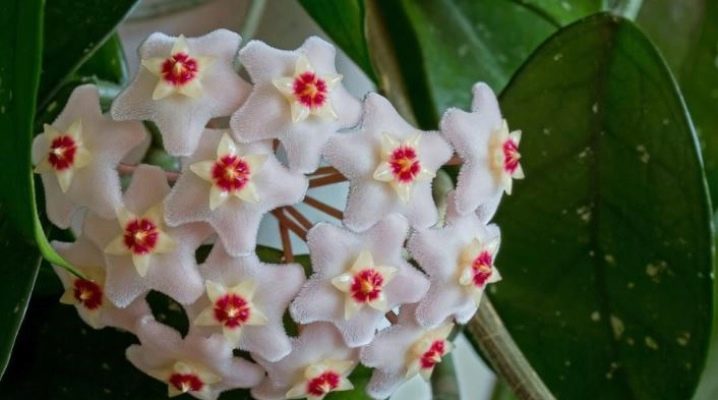
The main task of every hostess is to make her home beautiful and comfortable. Not only interior items, paintings and textiles, but also indoor plants can help in solving this problem. Fresh flowers will decorate the room, help purify the air and improve the emotional atmosphere in the house. Climbing plants are indispensable helpers in the field of interior design. With their help, you can create unique living sculptures, make unusual arches and hanging baskets. Designers and florists recommend paying attention to the tropical plant hoya carnosa, which has long stems with lots of beautiful leaves and unusual inflorescences.
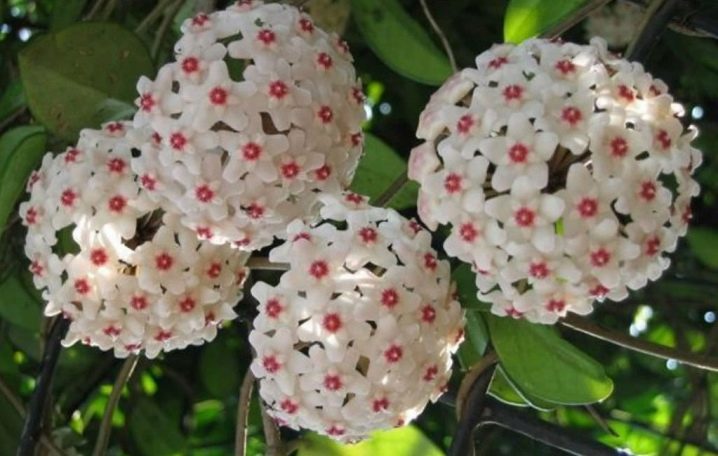
Description
Hoya carnosa (fleshy) is an evergreen succulent that multiplies quickly, forms beautiful inflorescences and is undemanding to care for. Under natural conditions, this flower can be seen in the forests of Australia and South China, as well as on islands in the Pacific Ocean. The plant's name comes from the surname of an English breeder who began growing a tropical plant in a greenhouse. The hoya root system develops rapidly and fills the entire flower pot. Only in the presence of strong and powerful roots does the plant begin to form inflorescences.
The maximum length of the stem with a large number of shoots is about 10 m. The length of the fleshy, hard, pointed leaf plate exceeds 7 cm. Matt bloom on the leaves provoked the appearance of the second name of the flower: wax ivy. Hoya bloom begins in early summer and ends in late July. Re-flowering occurs in early autumn.

The shape of the five-petal flowers resembles a star and can reach 20 mm. Wax inflorescences are collected in elastic rosettes. The shades of colors range from white to red. The room with blooming fleshy hoya is filled with the smell of honey.
A fast-growing vine can increase its length by more than 40 cm per year. When creating comfortable conditions for the growth and development of a succulent, the plant can delight its owners for more than 15 years. Hoya has not only high aesthetic properties, but also healing properties. The scent of the flower reduces mental stress and normalizes the emotional atmosphere in the family, the leaves accelerate wound healing and treat various skin inflammations.
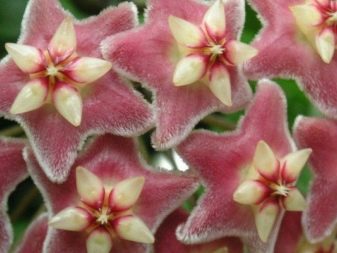
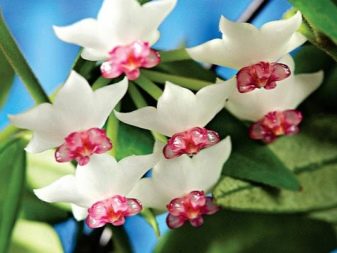
Varieties
Biologists identify several of the most popular types and varieties of this hoya.
- "Compact" - liana, which forms a large amount of deciduous cover. The leaf plate has uneven edges and a bent shape, as well as a bright color and waxy luster. The shape of the inflorescences is hemispherical and resembles a bell. The color of the flowers is white. This species adapts to different soils and does not need regular watering.


- "Tricolor" - a unique variety that has a deep purple hue. Leaves that are yellow or red have green edging around the edges. The color scheme of colors is pale purple, darker at the core. The flowering period consists of several stages and can last for more than six months.
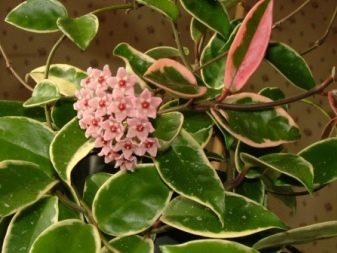

- "Variegata" - an unusual type of succulents that has creamy petals with a green border and forms pink inflorescences. The core of each flower is colored burgundy.


- "Crimson Queen" - a beautiful variety, the leaves of which have a white or cream edging. The shape of the leaves is oval with a sharp end.The color of the leaf plate is dark green.

- "Exotic" - liana, which has wavy leaves more than 5 cm in size. The central part of the leaf plate is yellow or pink, and the edges are green. Large inflorescences have a rich, pleasant aroma.
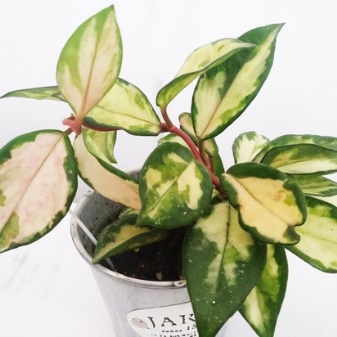

- "Gray host" - an unpretentious variety that has terry leaves of a silvery shade. Growth rate is average. The plant needs light soil and rare soil moisture.
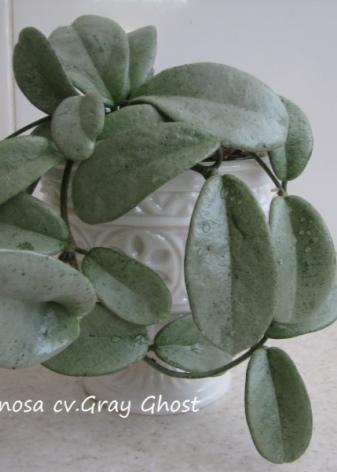
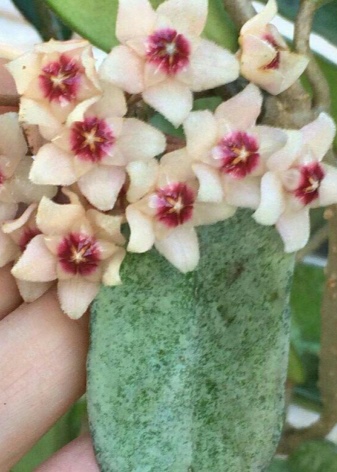
- "Stardust" - a classic variety that has a dark leaf plate covered with light spots. The color of flowers in the form of bells is pale pink with a red core.
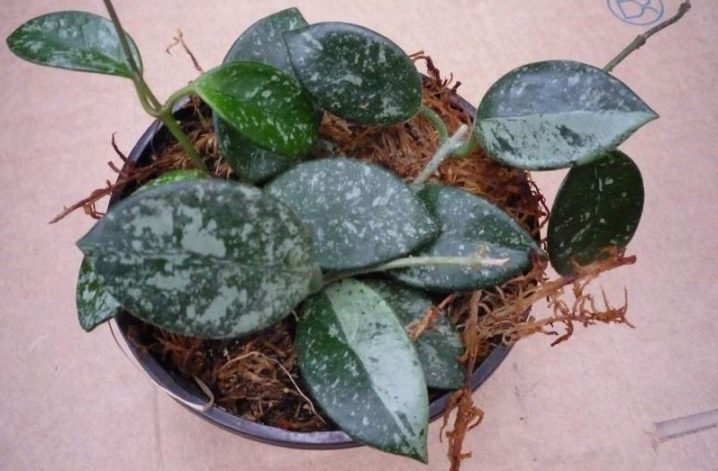
- "Red" Is a hybrid variety that forms elongated, smooth leaves with sharp ends. The inflorescences are colored deep red.

- "Krinkle" - an unusual variety, on the fleshy juicy shiny leaves of which you can see 4 dents on each side. A twisted sheet plate about 10 cm long is edged with a wavy edge. The delicate white flowers are star-shaped. More than 20 flowers can form in one inflorescence.
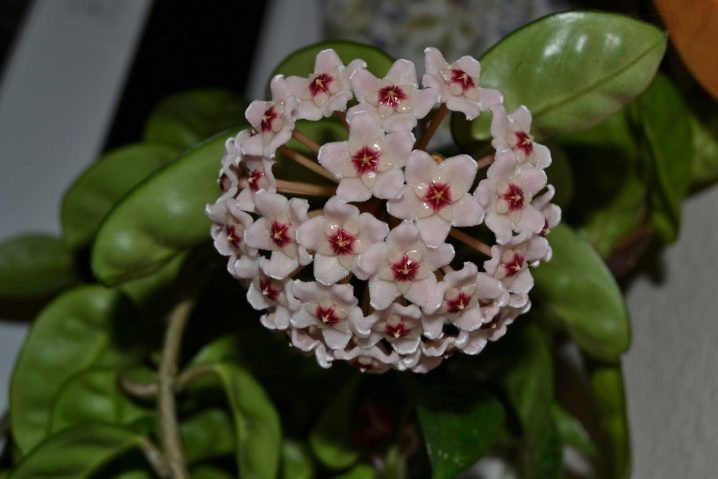
- "Susie Q" - a variety, the leaves of which are painted in a pale green color with a white edging, and the inflorescences have a pink tint.
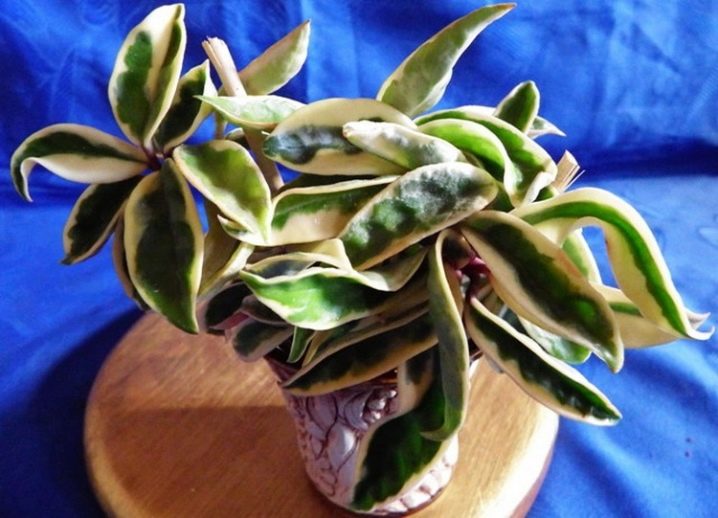
Landing rules
For planting vines, you need to choose small hanging flower pots. A prerequisite is the presence of a drainage layer. After purchasing a flower, experts recommend not immediately transplanting, but letting the vine get used to the new climatic conditions. The new planting container should not be significantly larger than the technical pot. Hoya will surprise with abundant flowering only when the container is completely filled with roots.
It is not recommended to transplant the flower more than once every 3 years. The most favorable time of the year for transplanting is mid-spring. For planting a plant, experienced gardeners recommend purchasing a soil mixture for a palm tree or preparing a nutritious soil yourself. The substrate for planting should consist of the same amount of deciduous and sod land, as well as humus. You can add to the mixture:
- a small amount of sand;
- chopped bark;
- moss.

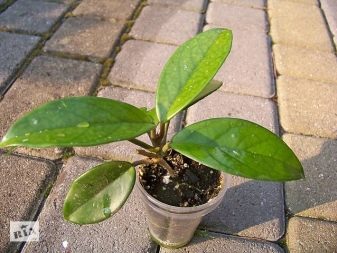
To prevent mechanical damage to the root system, it is necessary to use the transshipment method, in which only the filling of voids with a new nutrient substrate is carried out. After the rooting of the flower, it is strictly forbidden to water the soil; it will be quite enough just to spray the plant from a spray bottle.
If the transplantation of a plant is associated with the development of putrefactive processes of the root system, then it is necessary to completely cleanse the roots from the old soil, remove all diseased roots and only after that plant the flower in a new pot with a nutrient mixture.
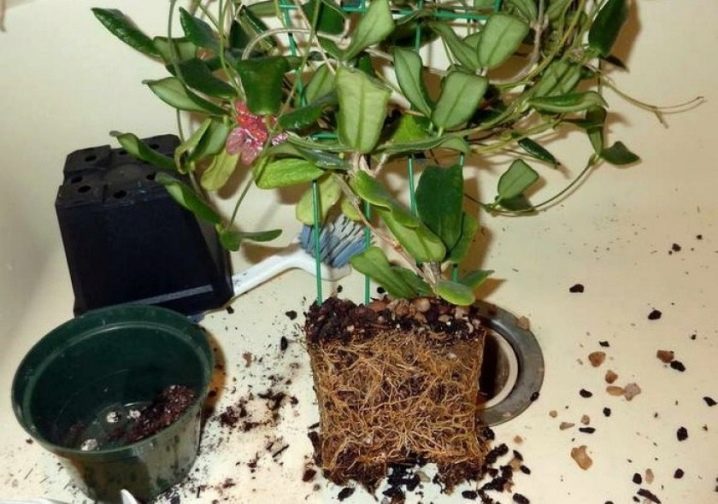
Care features
Hoya carnosa is an unpretentious plant, so caring for it will not cause difficulties even for novice flower growers.
- The plant prefers regular and moderate watering. after the top soil layer dries out. In winter, the frequency of soil moistening should be significantly reduced. If moisture accumulates in the pan, it must be drained. For irrigation, you can use only settled water at room temperature.
- For comfortable growth and development of a tropical flower it is necessary to regularly spray it and maintain a high level of humidity.
- To obtain the maximum number of inflorescences flower pots must be placed on windowsills that face south.
- Tropical flower does not require maintaining a certain temperature level in the summer, but prefers to winter at + 15 °.
- The plant needs feeding only during the flowering period. Experts recommend to apply a complex of mineral fertilizers once during flowering and to enrich the soil with organic nutrients 2 times.
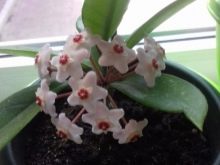

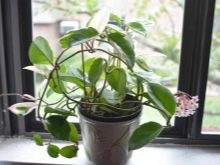
Several propagation methods can be used to obtain a new plant.
- Cutting method provides for the separation in spring or autumn from the mother bush of shoots with a length of at least 10 cm and their subsequent rooting in a moistened mixture of peat and sand or in water. The film cover will help create a greenhouse effect and accelerate the formation of the root system.
Experienced gardeners recommend processing the planting material with accelerators of the growth of the root system.
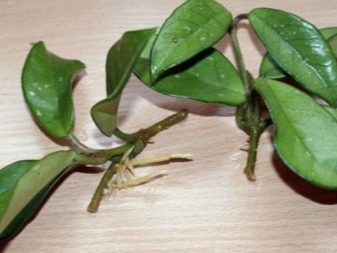
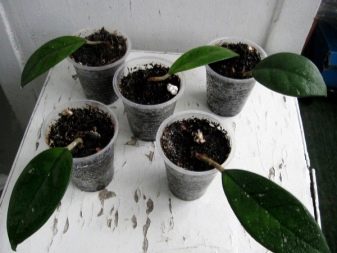
- Growing a plant from a leaf is a complex process. You can get a young hoya only from a leaf that grew in nature and has a maximum supply of energy and strength. The cut leaf must be deepened into the nutrient soil at an angle of 45 °.
To stimulate the formation of the root system, it is advisable to use hormonal drugs.
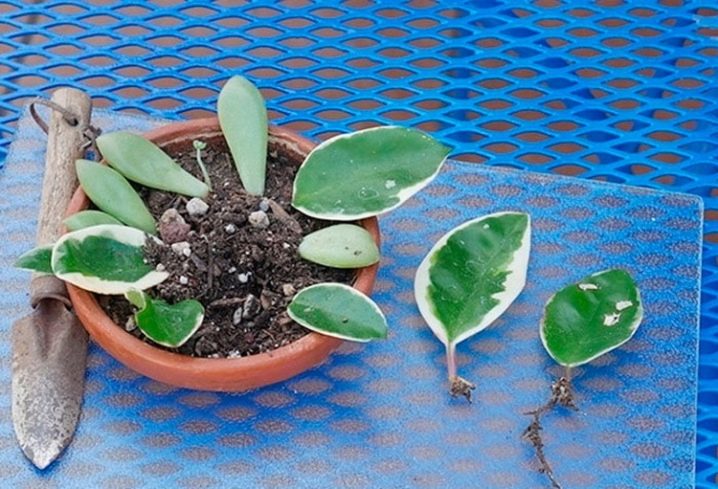
- Getting a new plant from seed is a laborious and time consuming process. It is very rare to find this seed on sale, and it is impossible to collect seeds on your own, since the flower at home does not form pods with seeds. This method is used by experienced breeders in professional nurseries.

Hoya has a negative attitude towards formative pruning. Experts advise removing only dry shoots and leaves, as well as diseased and damaged shoots. Biologists recommend paying attention to a few tips when growing wax ivy:
- during flowering you can not change the position of the flower pot;
- flower negative refers to drafts and dry air near heating appliances;
- when growing vines it is necessary to use the ampel method or fix the shoots on vertical supports;
- at the beginning of spring it is advisable put the flower pot in a container with warm water, which should saturate the entire soil.
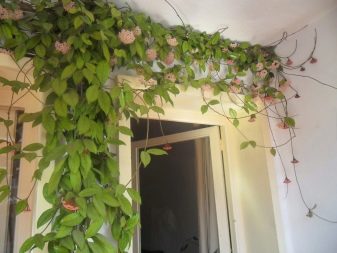
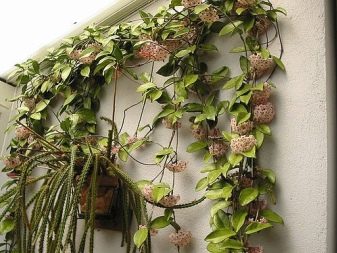
Bloom
Most growers acquire this plant because of its abundant flowering and the formation of colorful inflorescences. Inexperienced gardeners are often faced with the problem of lack of flowers on a healthy and strong plant. Biologists identify several reasons for this problem:
- low light level;
- placing a flower on the north side;
- the presence of a large pot;
- the introduction of an insufficient amount of mineral and organic fertilizers;
- violation of the temperature regime in the winter;
- moving the pot during the period of bud formation or at the time of flowering;
- pruning old peduncles.
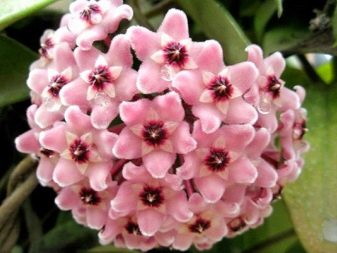

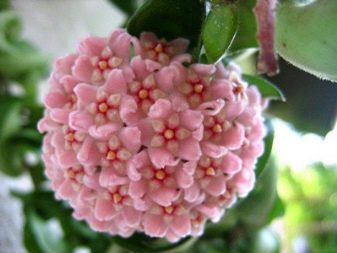
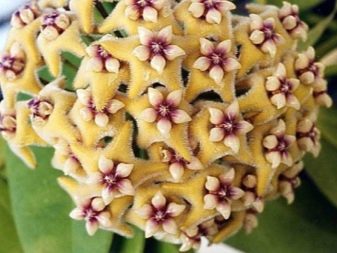
To increase the number of buds, placing the pot in warm water for a few minutes in early spring will help. Installing artificial light sources will help increase the number of colors.
Diseases and pests
Like any other plant, hoya suffers from various diseases and pests. In the event of fungal diseases, it is necessary to treat the leaf plate with a solution of copper sulfate. Abundant watering can provoke rotting of the root system, as well as the formation of mold on the surface of the soil. The most dangerous pests of the vine are thrips, scale insects and root nematodes. Signs of damage to a flower by pests:
- the formation of brown and white spots;
- yellowing and drying of leaves;
- the formation of cones on the leaf plate and stems;
- cessation of plant growth and development.
Plants affected by insects must be treated with special chemicals. Before processing, you must carefully read the instructions and use personal protective equipment. To prevent the appearance of pests, it is necessary to regularly bathe the flower in the shower.

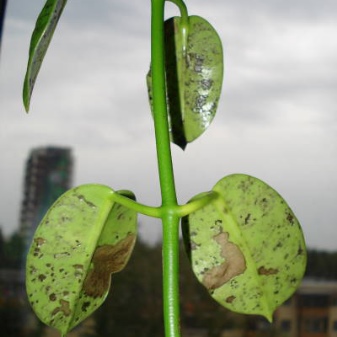
And also problems can arise if the rules of maintenance and care are violated:
- presence of dark spots - sunburn, soil moistening with cold water, excess of mineral fertilizers;
- drying and curling of leaves - violation of the temperature regime;
- falling foliage - low level of humidity in the room;
- wilting buds - lack of moisture;
- dying off and rotting shoots - boggy soil;
- slow growth and discoloration of the leaf plate - the introduction of an insufficient amount of nitrogenous fertilizers.
See the next video for even more about carnosis hoya care.


























The comment was sent successfully.